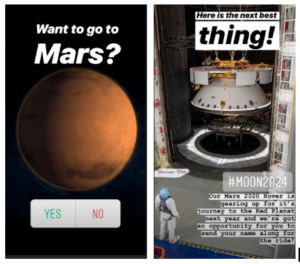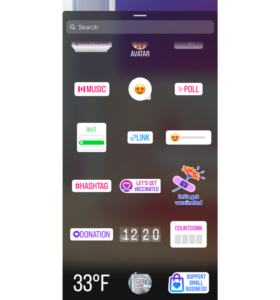In today’s digital age, the realm of influencer marketing has evolved dramatically. Gone are the days when only celebrities and mega-influencers held the reins of brand influence. Enter the micro-influencer: a more relatable, authentic, and highly effective force in the marketing world. At Bluetext, we’ve witnessed firsthand the power of micro-influencers and how their genuine connections with followers can elevate brands to new heights. In this blog post, we’ll explore the immense potential of micro-influencers and how they can be leveraged across public relations, social media, content marketing, and video campaigns.
What Are Micro-Influencers?
Micro-influencers are individuals with a following typically ranging from 1,000 to 100,000 on social media platforms. Unlike their mega counterparts, micro-influencers tend to focus on niche topics, creating highly engaged communities around their interests. Their followers see them as trustworthy sources of information and recommendations, making their endorsements significantly more impactful.
Authenticity in Public Relations
Public relations is all about building and maintaining a positive image for a brand. Micro-influencers excel in this area because of their perceived authenticity. They often have a close-knit community of followers who trust their opinions. When a micro-influencer endorses a product, it feels like a recommendation from a friend rather than a paid promotion. This trust translates into higher credibility for the brand.
To leverage micro-influencers in your PR strategy, consider inviting them to exclusive events, product launches, or behind-the-scenes tours. Their authentic and enthusiastic coverage can generate genuine buzz and media coverage that resonates more profoundly with the target audience.
The Social Media Advantage
Social media is the playground where micro-influencers shine. Their content is often more relatable and engaging than that of larger influencers, leading to higher engagement rates. Micro-influencers tend to interact more with their followers, fostering a sense of community and loyalty.
For effective social media campaigns, collaborate with micro-influencers who align with your brand values and target audience. Encourage them to create authentic content that showcases your product in real-life scenarios. User-generated content from micro-influencers can be a goldmine for your brand’s social media channels, providing a steady stream of genuine and engaging posts.
Content Marketing with a Personal Touch
Content marketing aims to provide valuable information to the audience, and micro-influencers can significantly enhance this effort. Their deep knowledge of their niche and their personal experiences make their content highly relatable and informative.
Work with micro-influencers to create blog posts, tutorials, reviews, and how-to guides that incorporate your products. This approach not only boosts your content marketing strategy but also positions your brand as an integral part of the influencer’s lifestyle. The personal touch of micro-influencers ensures that the content resonates well with their audience, driving more traffic and conversions for your brand.
Video: The Ultimate Engagement Tool
Video content is king in today’s digital landscape, and micro-influencers are adept at creating engaging and authentic videos. Whether it’s unboxings, product reviews, or daily vlogs, videos by micro-influencers capture the attention of their followers and keep them engaged.
Partner with micro-influencers to create video content that highlights your products in an authentic and entertaining manner. Live streams, IGTV episodes, TikTok videos, and YouTube vlogs can showcase your brand in a way that feels organic and relatable. This not only enhances viewer engagement but also builds a stronger emotional connection with the audience.
Leveraging Micro-Influencers in Paid Media Campaigns
Micro-influencers are not just valuable for organic content; they also play a crucial role in paid media campaigns. Their authentic and relatable content can be seamlessly integrated into paid advertising strategies to enhance reach and effectiveness. When micro-influencers create sponsored posts, stories, or videos, these can be promoted through paid media to extend their reach beyond their immediate followers. This approach leverages the influencer’s credibility and authenticity while benefiting from the targeted reach of paid advertising. Additionally, ads featuring micro-influencers often perform better than traditional ads because they feel more genuine and less intrusive to consumers. By incorporating micro-influencer content into your paid media strategy, you can create ads that resonate more deeply with your audience, drive higher engagement rates, and ultimately, achieve better return on investment.
Embrace the Micro-Influencer Revolution
The power of micro-influencers lies in their authenticity and ability to connect deeply with their audience. By integrating micro-influencers into your public relations, social media, content marketing, and video strategies, you can create more genuine and impactful campaigns. At Bluetext, we believe that the future of influencer marketing belongs to these authentic voices who can bring your brand story to life in the most relatable way.
Embrace the micro-influencer revolution and watch your brand’s influence grow organically and authentically. With the right strategy, micro-influencers can become your brand’s most powerful advocates, driving engagement, trust, and ultimately, success.
Last year, you may have started to notice a small update on your Instagram profile. In the top right, next to the ‘add a post’ button, appeared a squiggly ‘A’ (very similar to an ‘at’ symbol). That was how we – collectively – were introduced to Meta’s new social media app, Threads.
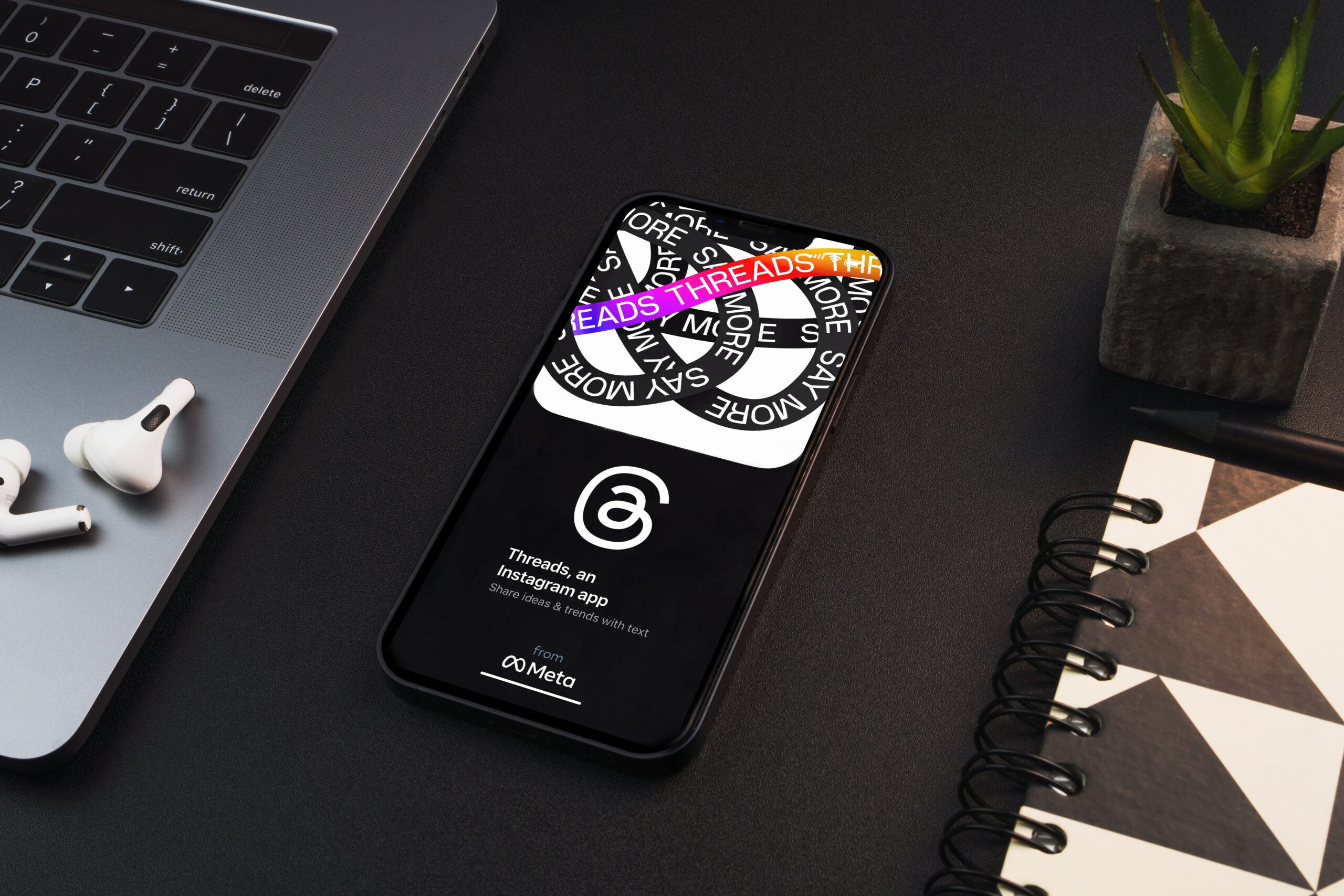
Threads is an app where you can view and share public conversations. Depending on how you use Threads, you can also post threads, reply to others and follow profiles you’re interested in. Threads and replies can include short pieces of text, links, photos, videos or any combination of these content types.
While Instagram is predominantly made up of video- and image-based content, Threads is – as Instagram says – a new way to share with text. The interface itself is remarkably similar to Twitter (or X), with a few differences. For example, Twitter posts have a 280-character limit, whereas Threads has a 500-character limit. Most notably, at this time, Threads does not allow for paid advertising; however, there is buzz that paid advertising will roll out on Threads in 2024, so ads may be just around the corner.
While advertising isn’t currently available on the platform, there are a number of reasons why businesses should set up a Threads account and start incorporating Threads into their content calendars.
1. Own Your Name
Like any social platform, you must create a username and profile when you set up your Threads account. If you wait too long to set up your profile, your company name could get snagged by someone else. Even if you don’t plan to use your profile initially, set up a private Threads account in your business name so you don’t run into issues in the future.
2. User Preference
Often, businesses think they know where their audience is spending their time online. If you’re a B2B company, you may think LinkedIn is the best place to reach your target audience. And yes, this could be true, but it doesn’t negate the fact that your audience (or at least a fraction of your audience) may prefer other social platforms for news updates and interacting with the latest content. So, why not expand your reach to Threads? Introducing a new social platform to your content mix won’t hurt your follower count or your social reach on existing platforms. In fact, it will only do the opposite. Expand your social footprint to Threads and potentially open your business up to new customers.
A simple way to kickstart your Threads account is to recycle your strongest-performing, timeless tweets that have proven to do well among your key audiences. As noted earlier, Twitter and Threads are remarkably similar, focusing on text-based posts that can spur conversation. Take what you’ve learned from Twitter and see how it performs on Threads! Just make sure that any recycled tweets are still relevant, and align with your core audience.
3. Interact, Engage, Expand
Threads is a great social platform to interact with current – and potential new – customers. Ask your Threads followers a question that sparks conversation, or encourage users to share their experiences with your products or services. You could even make Threads the go-to platform for exclusive updates and news around your product, with teasers on Instagram and Facebook to lure users onto your Threads page. The beauty of Threads is that it’s a new social platform; there’s no cookie-cutter way to use it yet. Make Threads your own! Test unique content, foster open dialogue with your audience…. you could even go back to your social slush pile and see if something that didn’t work out on one platform works on Threads.
The introduction of a new social platform for marketers is always daunting. A new platform usually means more content, and more work. But it can also be exciting! It’s a new way of interacting with your customers – both current and new. We strongly recommend setting your business up with a Threads account if you haven’t already, and start incorporating the platform into your social content calendars. And once Threads opens up to advertising, your account will be well-established and set up for success!
Ready to take your marketing to the next level? Contact Bluetext to learn about our digital orchestration and organic social services and how each can be tailored to your business’ objectives.
In today’s fast-paced digital landscape, businesses are constantly seeking innovative ways to cut through the noise and capture the attention of their target audience. With the myriad of marketing channels available, from social media and paid media to content marketing and public relations, crafting a cohesive strategy that seamlessly integrates these elements has become more crucial than ever. Welcome to the world of digital orchestration, where the art lies in harmonizing these diverse channels to create a symphony of success.
Understanding Digital Orchestration
Digital orchestration is more than just managing individual marketing channels; it’s about orchestrating them in such a way that they work together harmoniously to achieve a common goal. It’s about creating a unified brand experience across all touchpoints, whether it’s a tweet on X, a sponsored post on Facebook, a blog post on your website, or a feature in a leading publication. By synchronizing your efforts across various channels, you can amplify your message and increase overall impact.
The Power of Social Media
Social media has transformed the way businesses connect with their audience. Platforms like Facebook, Instagram, X, and LinkedIn offer unparalleled opportunities to engage with customers in real-time and build meaningful relationships. By incorporating social media into your digital orchestration strategy, you can leverage its reach and influence to amplify your message, drive engagement, and foster community.
Social media is not just about broadcasting your message; it’s about engaging in two-way conversations with your audience. By actively listening to their needs and preferences, you can tailor your content to resonate with them on a deeper level. Whether it’s sharing behind-the-scenes glimpses of your business, responding to customer inquiries, or soliciting feedback, social media allows you to humanize your brand and forge genuine connections with your audience.
Leveraging Paid Media
Paid media, including pay-per-click advertising, display ads, and sponsored content, allows you to reach a targeted audience with precision and scale. By strategically allocating your budget across various channels, you can maximize your ROI and drive measurable results. Whether it’s promoting a new product launch, driving traffic to your website, or generating leads, paid media plays a vital role in amplifying your brand’s visibility and reach.
One of the key advantages of paid media is its ability to provide instant visibility and results. Unlike organic methods that may take time to gain traction, paid media allows you to jumpstart your marketing efforts and quickly generate momentum. By leveraging advanced targeting options and analytics tools, you can optimize your campaigns in real-time to ensure maximum effectiveness and efficiency.
The Importance of Content Marketing
Content is king in the digital age, and content marketing is the fuel that powers your digital engine. Whether it’s blog posts, videos, infographics, or whitepapers, valuable content serves as the cornerstone of your digital strategy. By creating high-quality, relevant content that resonates with your audience, you can establish thought leadership, build trust, and drive engagement. Integrating content marketing into your digital orchestration strategy ensures that your message is not only heard but also valued by your audience.
Content marketing is not just about creating content for the sake of it; it’s about delivering value to your audience at every stage of their journey. Whether they’re seeking information, entertainment, or inspiration, your content should address their needs and provide meaningful solutions. By focusing on quality over quantity and delivering content that educates, entertains, or inspires, you can position your brand as a trusted resource and build long-lasting relationships with your audience.
Amplifying Your Message with Public Relations
Public relations (PR) plays a crucial role in shaping public perception and building brand credibility. By securing media coverage, managing crises, and cultivating relationships with key stakeholders, PR helps enhance your brand’s reputation and visibility. Incorporating PR into your digital orchestration strategy allows you to leverage earned media to amplify your message and reach a wider audience.
In today’s crowded marketplace, earning media coverage can be a powerful way to differentiate your brand and stand out from the competition. By crafting compelling stories, building relationships with journalists and influencers, and staying ahead of industry trends, you can position your brand as a thought leader and gain valuable exposure in relevant media outlets. Whether it’s securing a feature article in a leading publication, appearing on a popular podcast, or participating in industry events, PR can help elevate your brand and generate buzz around your products or services.
The Synergy of Digital Orchestration
The true power of digital orchestration lies in its ability to create synergy across multiple channels. By synchronizing your social media, paid media, content marketing, and public relations efforts, you can amplify the impact of each individual channel and create a unified brand experience for your audience. Whether it’s increasing brand awareness, driving website traffic, or generating leads, digital orchestration allows you to achieve your marketing objectives more effectively and efficiently.
When executed properly, digital orchestration can yield remarkable results for your business. By aligning your messaging, targeting, and creative across all channels, you can create a seamless brand experience that resonates with your audience and drives action. Whether you’re launching a new product, promoting a special offer, or raising awareness for a cause, digital orchestration allows you to deliver the right message to the right audience at the right time, maximizing your impact and driving measurable results.
Digital Channels Working in Harmony
In today’s hyper-connected world, digital orchestration is the key to unlocking the full potential of your marketing efforts. By harmonizing your social media, paid media, content marketing, and public relations strategies, you can create a symphony of success that resonates with your audience and drives tangible results for your business. So, embrace the art of digital orchestration and watch your campaigns soar to new heights of success.
Looking to take your campaigns to the next level? Contact us to get started.
In the ever-evolving landscape of B2B marketing, staying ahead of the curve is essential for companies aiming to carve out a competitive edge. Among the plethora of marketing strategies available, inbound marketing has emerged as a beacon of innovation, offering a nuanced approach to attracting, engaging, and delighting prospects. As businesses navigate the digital realm, the role of an inbound marketing company becomes increasingly pivotal, guiding enterprises towards sustainable growth and lasting success.
Deciphering the Essence of Inbound Marketing Solutions
At its core, inbound marketing embodies a customer-centric philosophy, focusing on providing value and fostering meaningful connections with target audiences. Unlike traditional outbound techniques that interrupt prospects with unsolicited messages, inbound marketing seeks to attract potential customers organically by delivering relevant, timely, and valuable content. By leveraging strategies such as content marketing, search engine optimization (SEO), social media, and email marketing, B2B companies can establish themselves as thought leaders in their industry while nurturing leads through every stage of the buyer’s journey.
The Multifaceted Role of an Inbound Marketing Company
Embarking on an inbound marketing journey requires more than just enthusiasm; it demands strategic acumen, technical expertise, and relentless dedication to excellence. This is where partnering with a specialized inbound marketing company proves invaluable. These agencies serve as catalysts for growth, orchestrating comprehensive strategies tailored to each client’s unique goals and target audience.
- Holistic Strategy Development: An inbound marketing company begins by immersing itself in the client’s ecosystem, conducting in-depth market research, and analyzing industry trends. Armed with these insights, they craft a holistic strategy encompassing content creation, distribution channels, lead generation tactics, and conversion optimization techniques.
- Content Creation and Distribution: Content lies at the heart of inbound marketing. From blog posts and whitepapers to videos and infographics, the agency produces a diverse array of high-quality content designed to educate, inspire, and engage the target audience. Through compelling storytelling and thought-provoking insights, they position the client as a trusted advisor, fostering brand affinity and loyalty.
- SEO and Website Optimization: In the digital realm, visibility is paramount. Inbound marketing agencies optimize clients’ websites for search engines, conducting thorough keyword research, implementing on-page optimization strategies, and enhancing technical elements to improve site performance and user experience. By ensuring maximum visibility in search engine results pages (SERPs), they drive organic traffic and enhance brand discoverability.
- Lead Generation and Nurturing: Generating leads is one thing; nurturing them into loyal customers is another. Inbound marketing companies employ a myriad of tactics, including targeted email campaigns, social media engagement, and marketing automation, to attract, capture, and nurture leads throughout the sales funnel. By delivering personalized content at each touchpoint, they guide prospects towards conversion, maximizing lead-to-customer conversions and revenue generation.
- Analytics and Performance Monitoring: In the realm of inbound marketing, data reigns supreme. Leveraging advanced analytics tools, inbound marketing agencies track the performance of campaigns, measure key performance indicators (KPIs), and derive actionable insights to refine strategies for optimal results. By adopting a data-driven approach, they continuously iterate and optimize campaigns, ensuring a high return on investment (ROI) and sustainable growth.
Elevating B2B Branding Through Inbound Marketing Excellence
In today’s hyper competitive landscape, branding serves as a cornerstone for B2B success. By aligning their inbound marketing efforts with their brand identity, companies can differentiate themselves from competitors, build credibility, and foster lasting relationships with customers. An inbound marketing company plays a pivotal role in this endeavor, helping clients articulate their brand story, values, and unique selling propositions through compelling content and immersive experiences. By consistently delivering value and addressing pain points, B2B brands can position themselves as trusted advisors, driving brand awareness, loyalty, and advocacy within their target market.
Navigating the Inbound Marketing Landscape for B2B Success
As B2B companies chart their course in the digital era, embracing inbound marketing is not just a choice but a strategic imperative. By partnering with a specialized inbound marketing company, enterprises can unlock the full potential of this transformative methodology, driving sustainable growth, and establishing themselves as leaders in their respective industries. In an age defined by personalized, value-driven marketing, investing in inbound marketing solutions is not merely an option; it’s a prerequisite for B2B success in the modern landscape. As businesses continue to evolve and adapt to changing market dynamics, the role of inbound marketing will only grow in significance, shaping the future of B2B growth and innovation.
Looking to partner with a B2B inbound marketing agency? Contact Bluetext.
As the seasons change, it’s the perfect time to breathe new life into your social media strategy. With platforms like LinkedIn, Instagram, TikTok, and Reddit constantly evolving, staying ahead means adapting and refreshing your approach. In this comprehensive guide, we’ll explore 15 dynamic ways to revitalize your social media presence across these diverse platforms. From tailoring your profile for each audience to embracing the latest trends and features, let’s dive into how you can embrace the spirit of renewal and rejuvenate your online presence this spring.
- Tailor Your Profile for Each Platform
Customize your profile on LinkedIn, Instagram, TikTok, and Reddit to resonate with the unique audience and features of each platform. From professional snapshots on LinkedIn to visually captivating content on Instagram, ensure consistency while adapting your narrative to suit the platform’s tone and audience expectations. - Cross-Platform Consistency
Maintain a consistent brand identity across all platforms while adapting to their respective nuances. Harmonize visual aesthetics, tone, and messaging to foster recognition and trust among your diverse audience base. Seamlessly integrate your contact information across platforms for streamlined communication and accessibility. - Revitalize Your LinkedIn Showcase Pages
Take advantage of LinkedIn Showcase Pages to spotlight specific aspects of your business or offerings. Refresh these pages with engaging content, including product updates, industry insights, and thought leadership articles. By curating compelling content, you enhance brand visibility and attract targeted audiences within the professional realm. - Elevate Your Instagram Stories
Make a statement with vibrant and dynamic Instagram Stories that captivate your audience’s attention. Utilize features like polls, quizzes, and countdowns to encourage interaction and feedback. Showcase behind-the-scenes glimpses, product demonstrations, or user-generated content to foster authenticity and engagement. - TikTok Trends and Challenges
Stay abreast of trending topics and challenges on TikTok to capitalize on viral content opportunities. Experiment with creative storytelling formats, catchy music, and engaging visual effects to resonate with the platform’s youthful audience. Embrace authenticity and humor to forge authentic connections and drive engagement. - Engage with Reddit Communities
Immerse yourself in relevant Reddit communities (subreddits) to foster meaningful discussions and connections. Participate in AMAs (Ask Me Anything), share valuable insights, and respond to inquiries to establish credibility and rapport within the community. Avoid overt self-promotion and prioritize adding value to the conversation. - Combat Bot Followers Across Platforms
Identify and remove bot followers across LinkedIn, Instagram, TikTok, and Reddit to cultivate an authentic and engaged audience. Regularly audit your follower lists and cleanse them of suspicious or inactive accounts. By prioritizing genuine interactions, you enhance credibility and foster organic growth on each platform. - Harness LinkedIn Live for Engaging Content
Harness the power of LinkedIn Live to broadcast live events, Q&A sessions, and industry discussions to your professional network. Leverage this feature to humanize your brand, share valuable insights, and engage directly with your audience in real time. Amplify reach by promoting upcoming broadcasts across other social media channels. - Instagram Reels for Creative Expression
Embrace Instagram Reels as a versatile tool for creative expression and storytelling. Experiment with short-form videos to showcase your brand’s personality, highlight product features, or share educational content. Leverage trending audio tracks, effects, and hashtags to maximize discoverability and engagement. - TikTok Influencer Collaborations
Forge strategic partnerships with TikTok influencers to amplify your brand’s reach and relevance. Collaborate on engaging challenges, branded content, or sponsored posts tailored to resonate with the influencer’s audience. Leverage their authenticity and influence to enhance brand credibility and drive user engagement. - LinkedIn Articles for Thought Leadership
Establish thought leadership on LinkedIn by publishing insightful articles that showcase your expertise and industry insights. Share actionable tips, case studies, or research findings to provide value to your professional network. Engage with comments and discussions to foster meaningful connections and expand your influence. - Instagram IGTV Series
Create episodic IGTV series on Instagram to deliver long-form content and storytelling to your audience. Develop thematic series around product launches, customer testimonials, or behind-the-scenes glimpses into your brand. Encourage audience interaction and feedback to foster a sense of community and connection. - TikTok Duet and Stitch Features
Leverage TikTok’s Duet and Stitch features to collaborate with users, respond to trends, and engage with the community creatively. Seamlessly interact with user-generated content by adding your unique twist or commentary through duets and stitches. Embrace spontaneity and authenticity to resonate with TikTok’s vibrant user base. - Reddit AMA Sessions
Host Reddit Ask Me Anything (AMA) sessions to directly engage with your audience, address inquiries, and share insights about your brand or industry. Provide candid responses, anecdotes, and insider perspectives to enrich the discussion and foster genuine connections. Leverage AMA sessions to humanize your brand and build trust within the Reddit community. - Curate Reddit Community Threads
Curate and contribute to relevant Reddit community threads to establish your brand as a valuable contributor and industry authority. Share informative articles, answer questions, and participate in discussions to showcase your expertise and thought leadership. Respect subreddit guidelines and etiquette to foster positive interactions and community goodwill.
Embrace the spirit of renewal this spring by revitalizing your social media presence across LinkedIn, Instagram, TikTok, and Reddit. Implement strategic initiatives tailored to each platform’s unique features and audience dynamics to maximize engagement, foster authenticity, and drive meaningful connections.
Social media isn’t just for sharing cat videos and memes; it’s a powerful tool for cybersecurity marketing. In this blog post, we’ll explore how marketers can leverage social media platforms to promote cybersecurity solutions effectively.
1. Educational Content
Use social media to share bite-sized, educational content about cybersecurity threats and best practices. Infographics, short videos, and quick tips engage your audience and position your brand as an informative resource. Short-form content is also easily digestible for your audience and can be shared easily across multiple social platforms with relative ease.
2. Interactive Webinars and Live Sessions
Host live webinars or Q&A sessions on platforms like Facebook or Instagram. This not only provides valuable information to your audience but also allows for direct interaction, building a personal connection between your brand and potential customers.
3. Cybersecurity Challenges and Quizzes
Create interactive challenges or quizzes related to cybersecurity on platforms like X or Instagram. Engaging content not only attracts attention but also educates your audience in a fun and memorable way.
4. Highlight Security Features
Use platforms like YouTube to create video content showcasing the security features of your products. Seeing is believing, and visual demonstrations can be powerful in conveying the effectiveness of your cybersecurity solutions.
Check out this product essence video we created for cybersecurity startup, Phosphorus, bringing their product to life in a creative yet informative way.
5. Partner with Influencers
Collaborate with influencers in the cybersecurity space to amplify your reach. Influencers can provide authentic endorsements and reach audiences that may be otherwise challenging to access through traditional marketing channels.
By strategically utilizing social media, cybersecurity marketers can connect with their audience, educate them about the importance of security, and establish a strong online presence. To learn more about developing a captivating social media strategy in the cybersecurity industry, contact us.
If you think back far enough, you remember the days when Instagram was a casual photo diary. People would flood their profiles with multiple posts a day, users’ feeds would be filled with heavily filtered duck face selfies, their OOTD (outfit of the day), the perfect slice of avocado toast, and artsy outdoor flicks. Shocking right? In 2023 such a practice would be deemed taboo unless you’re a mega influencer of course. Somewhere along the way Instagram became carefully curated for people to build a meticulous visual identity. Photos are planned, posed, and edited to perfection. While Instagram was a driver in creating influencers and promoting their picture-perfect feed, users turned to other platforms, like Snapchat, for a more casual “behind the scenes” view of their friends’ lives.

But imitation is the greatest form of flattery, right? In 2016 Instagram attempted to regain the interest of Snapchat users with the bold decision to add Instagram Stories to their platform. Boom, death to the post. Well, not exactly, but this new feature altered the way users interacted with Instagram. Instagram Stories drove significant shifts in user behavior. From how influencers and businesses present themselves on the app, to how other social media platforms began to support the demand of short-form, casual content.
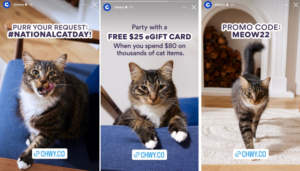
How are stories different and more effective than posts?
Posts serve as a backbone to your Instagram profile, being permanent curated capsules of how you are perceived by anyone who stumbles on to your content, including non-followers. Whereas, stories serve as short-formcontent that breaks the 4th wall, so to speak. They feel raw and impromptu as people speak straight to their followers. Stories also do a great job at creating a sense of urgency, users feel the need to check in throughout the day so they don’t miss out on any content before it disappears.
How do stories garner strong engagement?
Instagram Stories attract more than 400 million daily users, transforming the way people share and consume social media. Instagram Stories became a more casual and authentic way of sharing content with followers. Stories are temporary and disappear after 24 hours. The fleeting nature of stories makes the content feel more spontaneous and realistic. Stories are far less edited and often quickly filmed on the fly, feeling much more like an off-the-cuff one-to-one message than an artfully curated photoshoot result meant for the masses. Users can engage in stories in a multitude of ways, through face filters, polls, links/CTA buttons, replies, and likes. This enables stories to garner greater engagement, especially when trying to connect with new followers.
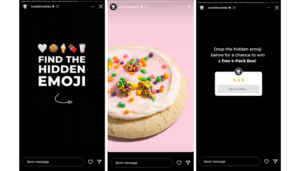
The story model produced great success, surpassing the views regular feed posts receive. Instagram stories build loyalty and a stronger connection with followers, enabling a platform to address them directly and provide an inside scoop on your life or your business. Stories are consistently watched to completion demonstrating just how powerful of a tool they are for capturing users’ attention.
What does this mean for my business?
62% of Instagram users say they have become more interested in a brand or product after seeing it in Stories. Instagram Stories can be a powerful tool for businesses to gain visibility and engagement with potential customers. Not to mention, stories can be a cost-effective way to keep up content velocity without significant effort in editing and post-production. The ability to layer text, GIFs, emojis, color filters, and much more is all built into the app interface enabling anyone to create polished professional-looking messages. Other platforms have also realized this creating things like Twitter Moments and YouTube Shorts, so story content is only going to continue to grow. If your business is looking to keep up with the best brand strategy firms, you need to tap into the power of stories and focus on curating short-form content that authentically connects with your followers.
If you are interested in learning more about how Bluetext’s marketing services can help you create quality content, contact us. As a DC-based digital design agency, we know how to make content that counts.
For many businesses, it can be difficult to directly track how social media impacts company revenue. As such, when evaluating return on investment (ROI) for social media, it’s important to look at it from a broader context that measures the more intangible aspects, such as improved customer service, positive change in brand perception, effective crisis communication, enhanced brand recognition, and sales conversions. Brand campaigns, for example, are able to increase brand awareness, engage with your mission, and impact brand sentiment, but it can be hard to connect top-of-funnel campaigns to financial results. In this blog post, we’ve laid out the steps you can take to prove the ROI of any social media investment.
1. Calculate your business’ true investment in social media.
First, determine the combined cost of the tools and platforms used for social. Next, consider the budget allocated to social ad spend. Then, determine the amount of time employees dedicate to managing social efforts for your business. Looking at those three costs holistically enables businesses to have a better sense of whether the investment justifies the value delivered.
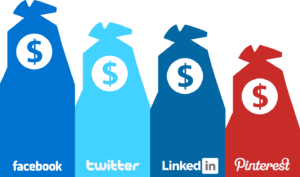
2. Set S.M.A.R.T. goals that connect to your business objectives.
Set specific goals that clearly label exactly what you want to achieve with social media. Be sure that your goals are measurable so you will know when you have achieved your goal. Next, be realistic and confirm that your goal is actually attainable. Then, ensure your goal is relevant to the bigger picture and overall business strategy. Lastly, set a timeline for yourself on when you would like to see results. A proposed deadline will keep you on track and accountable.
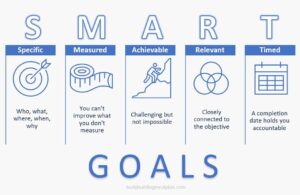
3. Establish a measurement framework that fits your unique organization.
Use social media analytics reporting and track key metric results on a monthly or quarterly basis. Key metrics include impressions, clicks, click-through rate (CTR), reactions, and engagement rate. Over time, you can average out the results to determine your benchmark, which will be used to compare month-to-month results. Keep in mind, it is not a bad thing if you perform below your benchmark as long as you can explain why.

4. Calculate the impact of your social strategy on revenue and business goals.
Determine the social media content impact: content volume, top content, and engagement. Next, calculate the marketing and sales impact: page views, page reach, lead generation, and website conversions. Finally, consider the business impact: brand health (sentiment towards the business), revenue tied to social efforts, and crisis management. All of this together should give you a fuller picture of your business’s social media performance and whether it’s worth the investment.
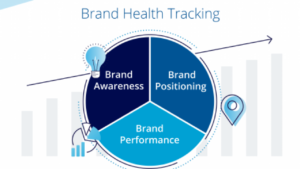
Feel confident about your return on investment and contact Bluetext if you are ready to have a social media strategy that produces results.
In today’s highly digital world, it’s no secret that each and every one of us is faced with an overload of content and information every day — but when it comes to marketing, does quantity really outweigh quality? The short answer is no. It can be easy to get caught up in the race to generate more: more content, more leads, more interactions. However, amidst this frenzy, a timeless principle continues to hold true — the undeniable value of quality over quantity. Shifting your focus towards producing quality content can lead to far more meaningful results. Not only will it drive engagement, but it will propel your brand towards sustained success.
Engagement that Resonates
With the integration of AI tools into marketing workflows, it is now easier than ever to roll out content at an accelerated rate. Companies are able to streamline the process of content creation and publish autonomously, but is the content that they’re creating truly resonating with audiences? Consistently producing content for content’s sake will not leave a lasting impression on an audience. Imagine sifting through a barrage of generic content that offers little more than a fleeting glance. Now contrast that with stumbling upon a meticulously crafted piece that speaks directly to your needs and interests — the latter, undoubtedly, captures viewers’ attentions and engages them on a deeper level. Quality content has the power to resonate with target audiences, evoking emotions, sparking conversations, and leaving lasting impressions. Forming genuine connections with your audience requires understanding their needs, engaging in meaningful conversations, and addressing their pain points — all of which needs to be done in a thoughtfully planned manner. By investing time in personalized interactions and addressing individual concerns, companies can foster a loyal community that actively supports and advocates for their brand.
Conversion that Counts
While a high quantity of leads might seem enticing, it’s the quality of those leads that matters. High-quality content has been found to generate 9.5 times more leads than low-quality content, and while having a steady presence on socials is important, it’s ultimately the number of conversions that result from your social presence that matters. Quality leads are more likely to become satisfied customers who stick around for the long haul; high-value content doesn’t just spark genuine and authentic interest amongst targeted audiences, but it can also establish lasting brand trust and loyalty. Long-term customers will inevitably drive consistent revenue and refer others to fall in line.
Brand Perception that Prevails
Your brand’s image is not just built by how frequently you appear, but by the impression you leave. A few high-quality interactions can create a stronger brand perception than a multitude of disengaged views. Consistently delivering value through quality content and interactions paints your brand in a positive light and encourages positive word-of-mouth referrals.
In the noisy landscape of modern marketing, the allure of quantity can be overwhelming, especially when AI tools can expedite content production and posting. However, by shifting your focus to quality, you’re not just participating in the marketing game — you’re setting yourself apart as a valuable player. Every piece of content, every interaction, and every engagement becomes a chance to make a meaningful impact. You are investing in the foundation of enduring success, building relationships that last and fostering a brand that stands the test of time.
If you are interested in learning more about how Bluetext’s marketing services can help you create quality content, contact us. As a dc-based digital design agency, we know how to make content that counts.
In a surprising and bold move, one of the social media giants, Twitter, has undergone a complete rebranding, emerging as “X.” This announcement has sent shockwaves through the digital marketing landscape, leaving professionals and businesses alike eager to understand the implications of this change. In this blog post, we will delve into the rebranding of Twitter to X and explore what it means for marketers.
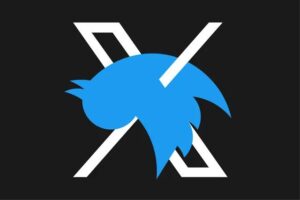
The Birth of X: A Glimpse into the Rebranding
Twitter’s transformation into X marks a significant evolution for the platform. The name change reflects the company’s desire to expand beyond its traditional microblogging roots and embrace a broader scope of offerings. The decision to rebrand was driven by a desire to reflect the platform’s new mission and vision, as well as to reposition itself in an ever-evolving digital landscape.
1. A Shift in Purpose: Beyond Microblogging
While Twitter was initially synonymous with microblogging, X’s rebranding signifies a shift toward a more diverse range of content formats. With an increased focus on multimedia content such as videos, images, and interactive elements, marketers will find themselves with an expanded toolkit to engage with their target audiences. This opens up exciting opportunities for creating more immersive and engaging marketing campaigns.
2. Enhanced Advertising Opportunities
With the rebranding to X, marketers can expect a revamped advertising ecosystem. X’s broader scope allows for a more refined and targeted approach to advertising, giving marketers the chance to connect with users based on their interests, behaviors, and engagement patterns. The platform’s enhanced analytics and data-driven insights will empower marketers to make informed decisions and optimize their campaigns more effectively.
3. Embracing Influencer Marketing
In the age of X, influencer marketing is set to take on a new dimension. The platform’s pivot towards multimedia content encourages the rise of influencer collaborations that go beyond 280-character endorsements. Marketers can leverage influencers to create compelling visual and interactive content that resonates with their audiences, resulting in more authentic and impactful brand partnerships.
4. Community Engagement and Feedback
X’s rebranding is accompanied by a renewed commitment to fostering communities and promoting user interactions. For marketers, this translates to a golden opportunity to engage directly with their audience, gather valuable feedback, and build stronger relationships. Brands that actively participate in meaningful conversations on the platform will stand to gain loyal followers and increased brand advocacy.
5. Adaptation to Changing Trends
X’s transformation serves as a reminder that the digital landscape is fluid and subject to constant change. Marketers must embrace agility and flexibility to keep up with evolving trends and technologies. By staying attuned to X’s evolving features and functionalities, marketers can position themselves as early adopters and gain a competitive edge.
The rebranding of Twitter to X signifies a new era for marketers, characterized by expanded content formats, enhanced advertising opportunities, and a renewed focus on community engagement. This rebranding isn’t just a name change; it’s a strategic move that aligns with the shifting demands of the digital age. Marketers who embrace X’s new identity and adapt their strategies accordingly will be well-equipped to navigate the ever-changing landscape of digital marketing and harness its full potential. Are you looking to understand how to best utilize X and its offerings? Contact us today.
